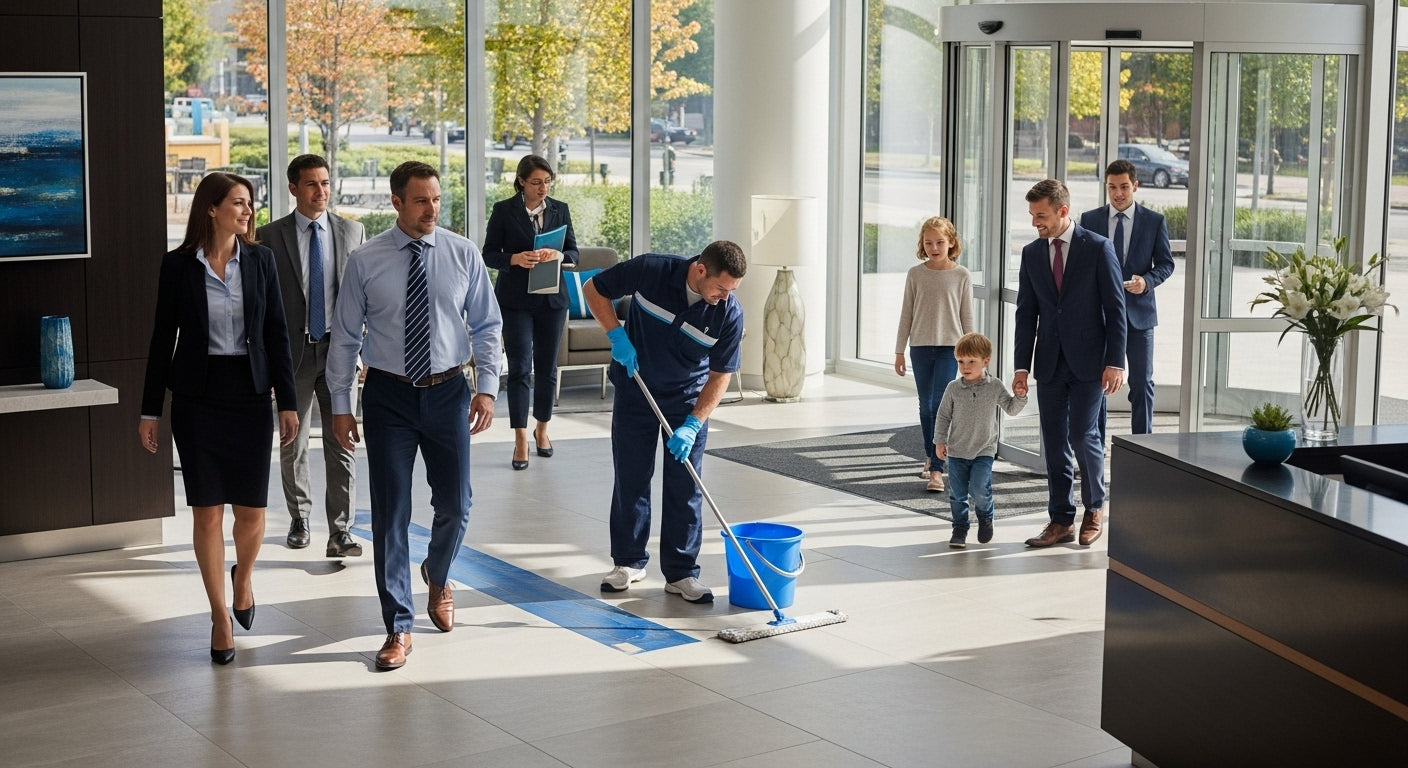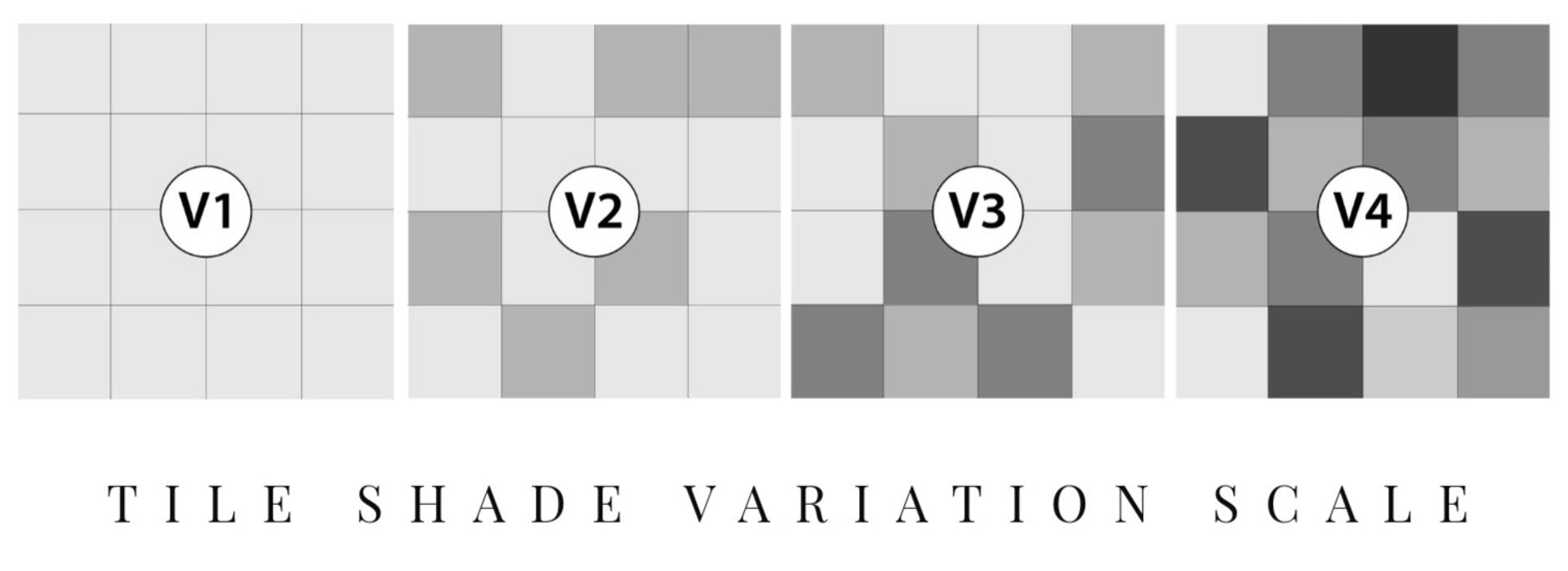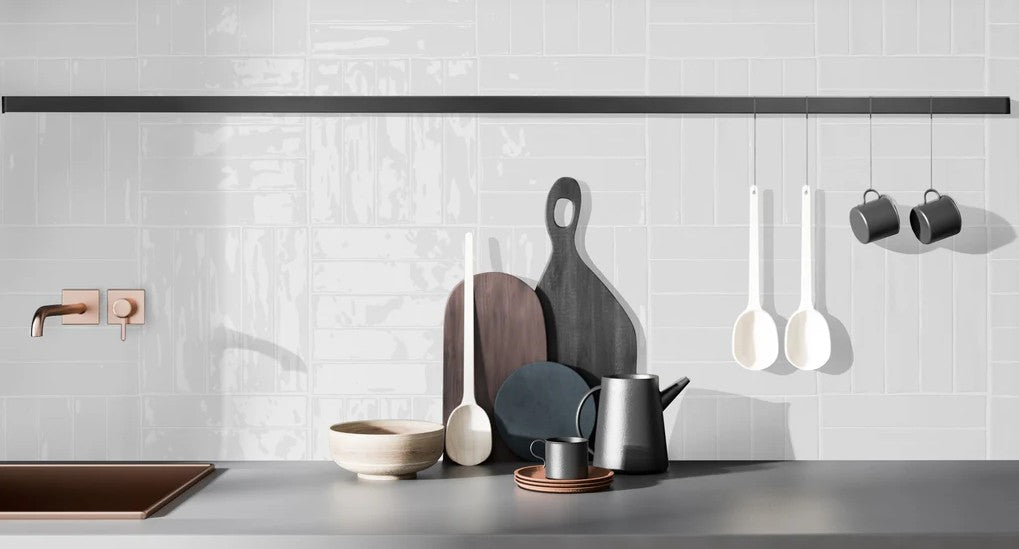Tiles take a beating in busy spaces. Porcelain tiles can have a water absorption rate of less than 0.5 percent, making them nearly waterproof compared to ordinary ceramics. Surprising as it sounds, even the toughest looking tile can fail in a high traffic zone if you miss one simple factor – the way people actually use the space every day. Picking the right tile is less about trends and more about survival.
Table of Contents
- Understand Traffic Types: Residential vs. Commercial
- Consider Durability: Porcelain vs. Ceramic Tiles
- Look for Slip Resistance: Grading and Textures
- Assess Maintenance Needs: Easy Cleaning Options
- Explore Design Versatility: Matching Styles and Colors
- Budgeting Wisely: Cost vs. Quality in High Traffic Areas
- Installation Tips: Ensuring Longevity and Performance
Quick Summary
| Takeaway | Explanation |
|---|---|
| Understand traffic types for tile selection | Different traffic patterns require specific tile durability. Residential areas need moderate durability, while commercial areas require high-performance tiles. |
| Choose porcelain for high durability | Porcelain tiles are denser and less porous, making them ideal for high traffic areas, unlike standard ceramic tiles. |
| Prioritize slip resistance ratings | Select tiles with high Coefficient of Friction (COF) values to ensure safety, especially in wet or high-movement areas. |
| Consider maintenance ease with tile choice | Opt for tiles that are easy to clean, like porcelain or glazed ceramics, to minimize long-term upkeep and preserve appearance. |
| Invest in professional installation | Proper installation ensures tile performance longevity; even the best tiles can fail without expert techniques and preparation. |
1: Understand Traffic Types: Residential vs. Commercial
Choosing the best tiles for high traffic areas requires understanding the fundamental differences between residential and commercial traffic patterns. These variations significantly impact tile selection, durability requirements, and long term performance.
In residential settings, traffic typically involves family members, occasional guests, and regular household activities. This environment experiences moderate foot traffic with varying intensity across different areas like entryways, kitchens, and hallways. Residential tile choices can balance aesthetic preferences with moderate durability needs.
Commercial spaces present a dramatically different scenario. High traffic commercial environments such as retail stores, hospitals, airports, and office buildings experience intense, continuous pedestrian movement. These spaces demand tiles that can withstand substantial daily wear and tear.
Key considerations for traffic type selection include:
- Foot traffic volume and intensity
- Weight and frequency of pedestrian movement
- Potential exposure to heavy equipment or rolling carts
- Cleaning and maintenance requirements
According to National Tile Contractors Association, tile selection should prioritize Coefficient of Friction (COF) ratings, which measure slip resistance and safety across different traffic conditions. Commercial spaces often require higher COF ratings to prevent accidents and ensure long term performance.
Understanding these traffic differences allows homeowners and designers to make strategic tile selections that meet specific environmental demands, ensuring both aesthetic appeal and functional longevity.
2: Consider Durability: Porcelain vs. Ceramic Tiles
When selecting tiles for high traffic areas, understanding the fundamental differences between porcelain and ceramic tiles becomes crucial for making an informed decision. These two popular tile materials offer distinct characteristics that significantly impact their performance and longevity.
Porcelain tiles represent the pinnacle of durability and resilience. Manufactured from refined clay and fired at extremely high temperatures, porcelain tiles are exceptionally dense and less porous compared to standard ceramic tiles. This unique composition makes them ideal for areas experiencing intense foot traffic, heavy equipment movement, or frequent moisture exposure.
Ceramic tiles, while versatile and attractive, have different structural properties. They are manufactured from standard clay and fired at lower temperatures, resulting in a less dense material with higher water absorption rates. This characteristic makes them more suitable for moderate traffic residential spaces rather than high-stress commercial environments.
Key durability considerations include:
- Water absorption rate
- Hardness and impact resistance
According to Tile Council of North America, porcelain tiles typically demonstrate superior performance metrics:
- Water absorption rate: Less than 0.5%
- Breaking strength: Significantly higher than ceramic tiles
- Wear resistance: Exceptional long term performance
For those seeking more insights into tile materials, understanding these technical nuances can guide smarter tile selection. While ceramic tiles remain cost effective and aesthetically pleasing, porcelain tiles deliver unmatched durability for demanding high traffic environments, making them the preferred choice for spaces requiring maximum performance and longevity.
3: Look for Slip Resistance: Grading and Textures
Slip resistance represents a critical safety factor when selecting tiles for high traffic areas. Understanding slip resistance grades and textures can prevent potential accidents and ensure optimal performance across different environments.
Tile slip resistance is measured using the Coefficient of Friction (COF), a scientific rating that quantifies how much traction a surface provides. Higher COF values indicate greater slip resistance, which becomes crucial in areas prone to moisture or potential spills.
The tile industry classifies slip resistance through standardized grading systems that help consumers and professionals make informed decisions. These grades range from smooth surfaces with minimal traction to highly textured tiles designed for maximum grip.
Key slip resistance considerations include:
- Surface texture complexity
- Coefficient of Friction (COF) rating
- Intended usage environment
- Potential moisture exposure
According to U.S. Access Board’s ADA Accessibility Standards, floor surfaces must be stable, firm, and slip-resistant to ensure safety. This standard underscores the importance of carefully selecting tile textures.
Different tile textures offer varying levels of slip resistance:
- Smooth tiles: Lowest slip resistance, best for dry interior spaces
- Textured tiles: Higher slip resistance, ideal for wet or outdoor areas
- Matte finish tiles: Moderate slip resistance, balanced aesthetic and safety
For those interested in understanding tile finishes in more depth, additional research can help refine selection strategies. Ultimately, choosing tiles with appropriate slip resistance ensures both safety and functionality in high traffic areas.
4: Assess Maintenance Needs: Easy Cleaning Options
Maintenance requirements play a pivotal role in selecting tiles for high traffic areas. Choosing tiles that balance durability with easy cleaning can significantly reduce long term upkeep costs and preserve the aesthetic appeal of your space.
Porcelain and glazed ceramic tiles typically offer the most straightforward maintenance profile. Their smooth, non porous surfaces resist dirt accumulation and prevent stain penetration, making them ideal for spaces demanding frequent cleaning and minimal effort.
Different tile materials require varying levels of maintenance attention. Natural stone tiles like marble or travertine demand more specialized care, including periodic sealing and gentle cleaning techniques. Synthetic tiles, by contrast, provide more robust and low maintenance solutions.
Key maintenance considerations include:
- Frequency of cleaning required
- Resistance to staining
- Compatibility with cleaning products
- Long term durability of surface finish
According to University of Arizona’s custodial services, daily maintenance practices are crucial for preserving tile surfaces in high traffic environments. Regular sweeping, dust mopping, and appropriate cleaning techniques can dramatically extend tile lifespan.
Recommended maintenance practices:
- Daily sweeping to remove loose dirt and debris
- Microfiber mopping for efficient surface cleaning
- Neutral pH cleaning solutions to prevent surface damage
- Immediate spill cleanup to prevent potential staining
For homeowners seeking simplified maintenance strategies, selecting tiles with smooth, non porous surfaces and light to medium tones can help minimize visible dirt and reduce overall cleaning complexity. Understanding each tile’s specific maintenance requirements ensures not just aesthetic appeal, but long lasting performance in demanding environments.
5: Explore Design Versatility: Matching Styles and Colors
Design versatility transforms tiles from mere functional surfaces into powerful aesthetic elements that define and enhance spaces. Selecting tiles that complement architectural styles while meeting performance requirements demands strategic thinking and creative vision.
Modern tile technologies offer unprecedented design flexibility, allowing homeowners and designers to create visually stunning environments without compromising durability. Neutral color palettes provide timeless sophistication, while bold patterns introduce dynamic visual interest in high traffic areas.
Color selection extends beyond aesthetic preferences, influencing perceived space dimensions and emotional responses. Light colored tiles can make compact spaces feel larger, while darker tones create intimate, grounded atmospheres. Understanding these visual dynamics enables more intentional design choices.
Key design versatility considerations include:
- Architectural context and existing design elements
- Color psychology and spatial perception
- Visual harmony with surrounding materials
- Long term style adaptability
According to the Whole Building Design Guide, material selection profoundly impacts environmental aesthetics and user experience. Thoughtful tile choices can transform functional spaces into compelling visual narratives.
Recommended design strategies:
- Coordinate with existing architectural elements
- Consider lighting conditions and color reflection
- Balance visual complexity with practical performance
- Select timeless designs over trendy patterns
For design enthusiasts seeking deeper insights, exploring tile pattern combinations can unlock creative potential. Ultimately, successful tile selection harmonizes functional requirements with aesthetic aspirations, creating spaces that are both beautiful and resilient.
6: Budgeting Wisely: Cost vs. Quality in High Traffic Areas
Strategic budgeting for tile selection involves more than just comparing initial purchase prices. Smart homeowners and designers understand that long term value encompasses durability, maintenance costs, and performance characteristics that extend far beyond the initial investment.
Porcelain tiles represent an excellent example of cost effectiveness in high traffic areas. While their upfront cost might be higher compared to standard ceramic tiles, their exceptional durability and minimal maintenance requirements translate to significant savings over time. These tiles resist wear, prevent frequent replacements, and maintain aesthetic appeal across years of intense use.
The true cost of flooring extends beyond the purchase price. Factors like installation complexity, potential repairs, cleaning requirements, and replacement frequency dramatically impact overall expenditure. Cheaper tiles might seem attractive initially but can become expensive burdens when frequent repairs or complete replacements become necessary.
Key budgeting considerations include:
- Initial material costs
- Installation expenses
- Long term maintenance requirements
- Potential replacement frequency
- Durability performance
According to the Resilient Floor Covering Institute, comprehensive life cycle cost analysis reveals that investing in higher quality materials can significantly reduce long term expenses. Their research demonstrates that premium tiles with superior durability often cost less over a decade compared to repeatedly replacing cheaper alternatives.
Budget optimization strategies:
- Calculate total cost of ownership
- Prioritize durability over initial price
- Consider professional installation
- Factor in maintenance expenses
By approaching tile selection as a strategic investment rather than a simple purchase, consumers can make financially intelligent decisions that balance aesthetic desires with practical performance requirements.
7: Installation Tips: Ensuring Longevity and Performance
Professional tile installation represents the critical final step in creating a durable, high performance flooring solution. Even the highest quality tiles can fail prematurely without proper preparation, substrate treatment, and precise installation techniques.
The foundation of successful tile installation begins with meticulous surface preparation. Substrates must be structurally sound, clean, level, and capable of supporting tile weight and anticipated traffic loads. Uneven surfaces can cause stress points, leading to tile cracking, grout failure, and premature wear.
Moisture management plays a pivotal role in tile installation durability. Improper moisture barriers or inadequate waterproofing can compromise tile adhesion, promote mold growth, and accelerate structural degradation. Professional installers understand the nuanced requirements of different tile materials and environmental conditions.
Key installation considerations include:
- Substrate flatness and structural integrity
- Moisture barrier effectiveness
- Expansion joint placement
- Adhesive and grout compatibility
- Tile material specific requirements
According to the General Services Administration, adherence to industry standards like ANSI 108 and Tile Council of North America guidelines is crucial for successful installations.
Critical installation best practices:
- Use professional grade adhesives
- Implement proper expansion joints
- Allow adequate curing time
- Select appropriate grout compounds
While DIY installation might seem cost effective, professional installation ensures optimal performance, warranty protection, and long term durability in high traffic areas. Investing in expert installation transforms quality tiles into resilient, beautiful flooring solutions that withstand years of intense use.
Below is a comprehensive table summarizing the key factors, benefits, and best practices for choosing tiles for high traffic areas, as discussed throughout the article.
| Key Aspect | Summary of Recommendations and Benefits |
|---|---|
| Traffic Type Consideration | Assess residential vs. commercial use; commercial spaces need high-performance, durable tiles. |
| Durability: Porcelain vs. Ceramic | Porcelain is denser, less porous, nearly waterproof, and more durable than standard ceramic. |
| Slip Resistance | Prioritize high Coefficient of Friction (COF) ratings and textured/matte finishes for safety. |
| Maintenance Needs | Choose easy-to-clean, non-porous tiles (like porcelain/glazed ceramic) to reduce long-term upkeep. |
| Design Versatility | Match tiles to aesthetic preferences, architectural style, and color psychology for timeless appeal. |
| Budgeting and Cost Efficiency | Invest in quality tiles and professional installation for lower lifetime costs and better performance. |
| Installation Best Practices | Ensure expert installation with proper surface prep, moisture barriers, and industry standards for longevity. |
Ready to Upgrade Your High-Traffic Floors?
Tired of constantly repairing or replacing worn tiles in busy areas? The article highlighted the daily challenges of picking the right tiles for high-traffic spaces, such as balancing slip resistance, durability, design versatility, and cost. If you are struggling to find resilient tile solutions that actually last while keeping your space stylish, you are not alone. Many homeowners and professionals face the same dilemma when evaluating porcelain versus ceramic, textured surfaces for slip resistance, or the true cost versus quality for long-term savings.

Now is your chance to put these tips into action. At TileChoices.com, you will find a wide array of durable porcelain and ceramic tiles designed for commercial-level performance and modern beauty. Explore our detailed guides on matte vs glossy finishes or discover creative inspiration from our tile pattern combinations blog. Shop now and transform your high-traffic rooms with solutions that are proven to endure. Visit today for samples, support, and a flooring upgrade that will withstand the busiest spaces for years to come.
Frequently Asked Questions
What types of tiles are best for high traffic areas?
Porcelain tiles are considered the best choice for high traffic areas due to their exceptional durability, low water absorption rate, and resistance to wear. Ceramic tiles can also be used, but they may not perform as well under intensive foot traffic.
How do slip resistance ratings affect tile selection for high traffic areas?
Slip resistance ratings, measured by the Coefficient of Friction (COF), are crucial for safety in high traffic areas. Higher COF values indicate better slip resistance, making tiles safer for environments prone to moisture or spills.
What maintenance is required for tiles in high traffic environments?
Choosing tiles with smooth, non-porous surfaces, like glazed ceramic or porcelain, generally requires less maintenance. Regular sweeping, occasional mopping with neutral pH cleaners, and immediate spill cleanup are recommended to keep these tiles looking great and prolong their life.
How can I budget effectively when selecting tiles for high traffic areas?
Effective budgeting involves considering the total cost of ownership—factoring in initial material costs, installation expenses, long-term maintenance requirements, and durability. Investing in high-quality tiles may have a higher upfront cost but can lead to significant savings over time due to lower replacement and maintenance needs.









